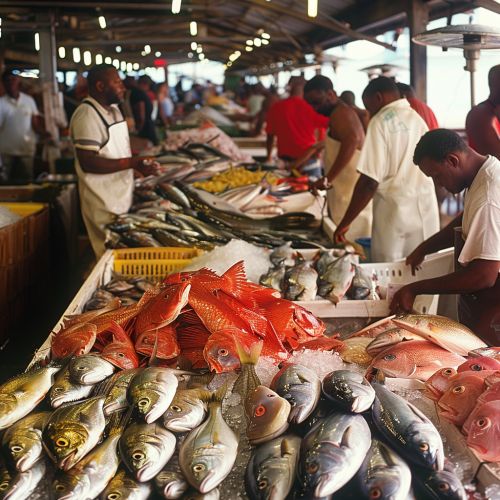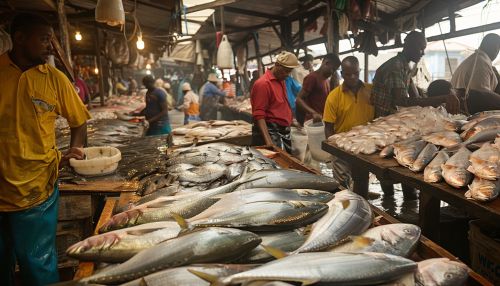Fisheries
Overview
Fisheries are complex systems that involve more than just the activity of fishing. They encompass the entire ecosystem, including the fish and the environment in which they live, as well as the people, businesses, and communities that depend on fishing. Fisheries can be found in both freshwater and marine environments and can be wild or farmed. The study of fisheries includes understanding the life history, behavior, and ecology of fish species, as well as the gear and techniques used to catch them. It also involves studying the social, economic, and institutional frameworks that govern fishing activities. Fisheries science is the academic discipline dedicated to understanding and managing fisheries.
Types of Fisheries
There are two main types of fisheries: marine and inland. Marine fisheries are located in the ocean and are often divided into coastal fisheries, which are located near the shore, and offshore fisheries, which are located further out to sea. Inland fisheries are located in freshwater bodies such as rivers, lakes, and ponds.
Aquaculture, or fish farming, is another important type of fishery. It involves raising fish in controlled environments, such as ponds, tanks, or net pens in the ocean. Aquaculture can be used to produce food, restore populations of endangered species, enhance wild fish stocks, and provide recreational fishing opportunities.
Fisheries Management
Fisheries management is the process of regulating when, where, and how fish are caught, so that there is a sustainable supply of fish for future generations. The goal of fisheries management is to create a sustainable fishery by balancing the health of the fish population with the economic needs of the people who depend on fishing. This involves setting catch limits, regulating gear and fishing methods, protecting habitats, and monitoring fish populations and fishing activity.
Fisheries management is often complex and challenging due to the many factors that can affect fish populations, including overfishing, habitat loss, pollution, climate change, and invasive species. It also involves dealing with conflicting interests and values among different stakeholders, such as commercial and recreational fishers, conservationists, and the public.
Economic Importance
Fisheries play a crucial role in the global economy. They provide a vital source of food and income for millions of people around the world. According to the Food and Agriculture Organization (FAO), more than 59.6 million people were engaged in fisheries and aquaculture in 2018, and fish provided about 20.3% of the world's population with at least 20% of their average per capita intake of animal protein.
Fisheries also contribute significantly to trade and economic growth in many countries. In 2018, the global export value of fish and fishery products reached a record high of $164 billion, with developing countries contributing more than 54% of this amount.
Environmental Impact
While fisheries provide important economic and nutritional benefits, they can also have significant environmental impacts. Overfishing is a major concern, as it can lead to the depletion of fish stocks and the collapse of fisheries. Other harmful fishing practices, such as bottom trawling and the use of dynamite or poison, can damage marine habitats and kill non-target species.
Aquaculture can also have negative environmental impacts, including water pollution from fish waste and uneaten feed, the spread of diseases and parasites to wild fish populations, and the escape of farmed fish into the wild, where they can compete with or interbreed with wild fish.
However, with proper management and regulation, the negative impacts of fisheries can be minimized, and fisheries can contribute to the conservation of aquatic biodiversity.
See Also
- Commercial fishing
- Recreational fishing
- Sustainable fishing
- Fisheries law
- Fisheries and climate change


